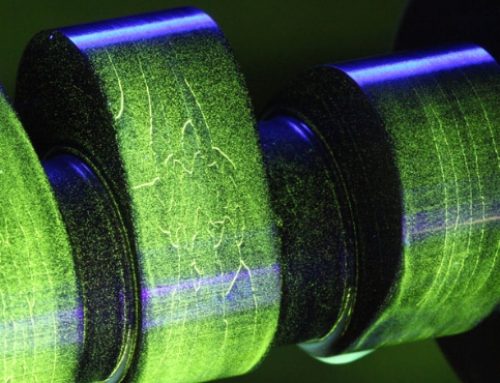A black light is a lamp that emits ultraviolet light in the UVA band. Among them, UVA band (320nm-400nm) ultraviolet lamp is also called UVA lamp, which of course also includes UV flashlight and Wood’s lamp.
The name Wood’s lamp comes from the name given to it by its inventor, Robert Williams Wood.

- What is a black light? Why is it called a “black” light?
Although a black light emits ultraviolet light, the human eye cannot detect ultraviolet light, so as far as the human eye is concerned, the light is “black” in a way that cannot be seen.
Many black light manufacturers intentionally emit some violet light for the purpose of warning and protection, which helps users avoid overexposure to ultraviolet rays, which can damage eyes and skin.
- What types of black lights are there?
There are many types of black lights, including incandescent lamps, fluorescent lamps, light-emitting diodes (LEDs), lasers, and mercury vapor lamps. Among them, the ultraviolet rays produced by incandescent lamps are at least almost negligible.
Some blacklights consist of a filter that blocks visible light but allows UV rays to pass through. This blacklight bulb or filter typically emits a dim, purple-blue projected light. For this reason, the lighting industry calls these devices “BLB,” which stands for “Black Light Blue.”
Other black lights, these lights tend to be brighter due to the lack of filters. Like the type of fluorescent light used in “Bug Opener,” this light is called “BL,” which stands for “black light.”
A black light or ultraviolet laser produces coherent monochromatic radiation that is invisible to the human eye.
Goggles are required when using this type of equipment, as strong UV rays can cause permanent blindness and other tissue damage.
- Use of black light
The ultraviolet rays emitted by black light lamps can be used to observe fluorescent dyes, increase the brightness of phosphorescent materials, cure plastics, trap and kill insects, promote the production of melanin in the skin, and take artistic photos, etc.
In addition, black light lamps also have various applications in medicine. Use UV light to disinfect, diagnose fungal infections, bacterial infections, acne, melanoma, ethylene glycol poisoning, and to treat neonatal jaundice, etc.
- What are the precautions for using black light?
- Wait for the black light to stabilize
When the black light lamp is first ignited, the output does not reach the maximum value, so the inspection work should wait for a period of time before proceeding.
- Avoid direct exposure to eyes
The ultraviolet radiation of black light lamps may cause damage to the eyes, so direct exposure to the eyes should be avoided when using them.
If you need to see objects up close, wear appropriate eye protection.
- Avoid prolonged exposure
Prolonged exposure to ultraviolet radiation from blacklights can cause skin damage, such as sunburn or burns.
- Pay attention to the usage environment
Therefore, when using black light, you should try to control the use time and avoid prolonged exposure.
The ultraviolet radiation of the black light lamp may cause chemical reactions to certain substances. Therefore, you should pay attention to the use environment when using it and avoid using it around flammable, explosive, volatile or chemically reactive substances.
- Regular inspection and maintenance
Check and maintain your black light regularly to ensure it is working properly and safe to use.
In short, when using black light lamps, long-term exposure and adverse effects on the human body should be avoided. At the same time, pay attention to the use environment and regular inspection and maintenance to ensure the normal operation and safe use of the black light.
TANK007 is a professional black light lamp R&D, production and sales manufacturer, a leader in the ultraviolet disinfection lamp industry, and has become a long-term partner of many Fortune 500 companies. It is trustworthy!



